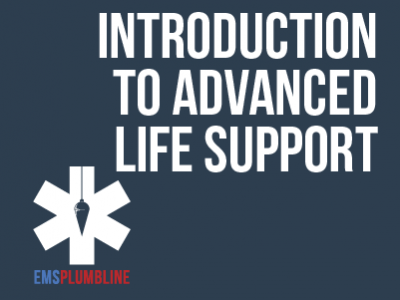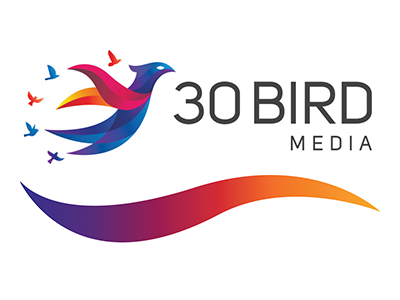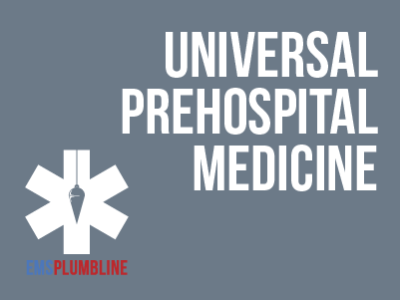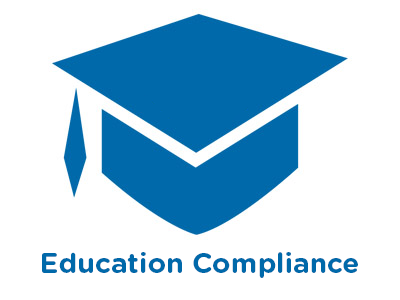 |
Call Center Management: Managing for Excellent Service |
1.00 |
This course will cover how to set service levels, achieve service levels, and use reports. |
 |
Constructing: Sepsis for Paramedics, Part 2—Fluid Resuscitation |
1.00 |
If you think caring for sepsis patients is not an interesting topic, you might want to think again. Medical Directors Jeremy Cushman and Christopher Galton, give Paramedic Hoskins a passionate description of proper patient care. Fluids are important and this is why. Final Exam: This multiple choice exam is designed to test your knowledge of the material you just reviewed. You have two attempts to gain an 80% or higher on this exam. Please take your time and answer each question carefully. |
 |
Forklift Safety |
1.00 |
This course covers the proper handling and safe operation of forklift truck machinery. This includes some of the hazards operators face as well as tips for proper load centering and proper load capacities to prevent tip-overs. |
 |
GED: Social Studies - Unit 3: Economics |
1.00 |
Welcome to Unit 3: Economics. Economics accounts for about 15% of the questions you'll see on the test. In this unit, we'll cover the basics of both micro and macroeconomics. We'll work with graphs, and we'll explore consumer economics. |
 |
Introduction to Fireground Size-up |
2.00 |
This course is an extensive introduction to fireground size-up and is a prerequisite for all other Vigilant size-up courses. This lesson defines the term size up and describes its purpose in fireground operations. The elements of a proper size-up are defined and described. The course introduces a five-step procedure for implementing the size-up process on the fireground. Each step of this procedure is defined and described with an explanation of the elements that are identified during each step. The lesson concludes with an overall summary and final evaluation. |
 |
Reducing Foodborne Illness Risk Factors in Food Service and Retail Establishments |
0.50 |
This course covers different risk factors that are insufficiently controlled in institutions, retail food, and restaurants. Recommendations to help these places control these risk factors are also given. |
 |
Human Relations Skill Development: Focus on Leadership Styles and Conflict Management |
2.00 |
Research indicates that those in positions of leadership use a variety of different leadership and management styles. A person’s effectiveness as a leader is often directly linked to his or her leadership style. It is important for OST professionals to be aware of the assumptions and characteristics of different leadership styles. Knowledge of different leadership styles can help OST professionals reflect on their own leadership style and assess its effectiveness. It can also help OST professionals take a proactive approach to applying different leadership styles and techniques, depending on the situation.
Leaders also use a variety of different styles when it comes to managing and resolving conflicts. By understanding how to diagnose the causes and dynamics of conflict and understanding the characteristics of different conflict management styles, OST professionals can choose the best conflict management strategy for each situation.
There are a number of skills that enhance the ability of OST professionals to employ different leadership and conflict management styles effectively. When OST professionals are aware of these skills and their own skill levels, they can set priorities for ongoing development of leadership skills. |
 |
Understanding Autism in Your Community |
1.00 |
This course is designed to educate communities on how they can work together to be more inclusive and accepting of people with autism. It will give you an overview of the struggles people with autism face and some ways in which communities can make themselves more accessible and autism-friendly. |
 |
Fire Behavior Basics (NYS02) |
1.00 |
This lesson introduces the basic chemistry and physics of fire behavior. The lesson defines combustion, reviews the fire triangle and components of the fire tetrahedron. The stages of fire develop and accompanying characteristics are discussed with a focus on heat transfer and how it plays a part in fire develop. The lesson is evaluated using a brief quiz covering the material included in the lesson. |
 |
AWS Certified Cloud Practitioner - Exam CLF-C01 |
24.00 |
AWS Certified Cloud Practitioner (Exam CLF-C01) provides basic knowledge of cloud concepts, AWS cost management and Service Level Agreements, core AWS services, core solutions and management tools, networking and security features, and identity, governance, privacy, and compliance features.
You will find this course valuable if you are just beginning to work with cloud-based solutions and services or are new to AWS. This course maps to the AWS Certified Cloud Practitioner CLF-C01 exam. You will benefit most from this course if you intend to take the AWS Certified Cloud Practitioner CLF-C01 exam. AWS Certified Cloud Practitioner can be used to prepare for other AWS role-based or specialty certifications, but it is not a prerequisite for any of them.
This course assumes you have basic knowledge of general technology concepts, including concepts of networking, storage, compute, application support, and application development. |
 |
Foundational Literacy Strategies for Paraprofessionals |
1.00 |
This course covers foundational literacy strategies for paraprofessionals. It will walk you through different strategies you can use throughout the reading process. The content of this course is divided into three parts: strategies you can use before reading, during reading, and after reading. It is just one out of many paraprofessional courses we offer. This course will help you develop new knowledge about students and will help you better understand your role as a paraprofessional. |
 |
Pneumothorax and Hemothorax for EMTs |
1.00 |
Paramedic Instructor Peter Bonadonna discusses some of the most life threatening chest injures. |
 |
Effective Communication with Children and Youth |
2.00 |
We are constantly communicating with the children and youth in our program through our words and actions. It's important for program staff to think critically about their communication skills and habits in order to communicate effectively. During this course, participants will learn about effective and dynamic communication tools, strategies to check for understanding, and activities that engage children and youth in communication. |
 |
Exploring Developmental Needs and Characteristics of Different Age Groups |
2.00 |
Certain developmental needs and traits are associated with younger school-age children, while others are typical of older school-age children and youth. While the differences between school-age children of different ages are not clear-cut, there are some general traits and tasks that are often associated with younger (ages 5 – 7), middle (ages 8 – 10), and older (ages 11 – 12) school-age children and youth. Understanding these differences helps staff plan appropriate activities and guidance strategies for children of different ages. |
 |
Sales: Qualifying |
0.50 |
In this course, you will learn how to improve your listening skills to better understand customers’ needs and decision-making criteria. You will also learn how to use questioning techniques to help customers recognize the benefits of your products and services. |
 |
Creativity and Innovation: Personal Creativity |
1.34 |
Creativity is often considered a talent that some people have. Actually, creativity's a skill that everyone can nurture through exercise and practice. You can prepare yourself both mentally and physically to be creative.
In this course you will learn to: prepare yourself mentally and physically to be creative, and use your experiences, innocence, intuition, and sense of adventure to increase your creativity. |
 |
A Student Guide to Fire Safety |
0.50 |
Between January 2000 and May 2015, 85 fatal fires in dorms, fraternities, sororities, and off-campus housing took the lives of 118 people. This course offers students a refresher about fire safety, including the main causes of campus fires, the actions students can take to prevent fires, and the importance of working smoke alarms and knowing two ways out.
|
 |
2021 Quarter 1: COVID-19 Quality Care Updated |
1.00 |
Providers in Western NYS have learned a great deal about treating patients that suffer from COVID-19 infections. This session was recorded in January 2021. Paramedic Shawna Rizzi does a fantastic job of interviewing Dr. Christopher Galton. Dr. Galton draws on his experience as a paramedic, EMS medical director, intensivist, and anesthesiologist to summarize the changes that every paramedic should know.
Final Exam: This multiple-choice exam is designed to test your knowledge of the material you just reviewed. You have two attempts to gain an 80% or higher on this exam. Please take your time and answer each question carefully. |
 |
Mental Health First Aid in the Classroom |
1.00 |
A student shouts in rage, “I wish I were dead!” Is he expressing suicidal ideation? A student quickly covers cut marks over her left forearm. Should we approach her or respect her privacy?
The National Alliance on Mental Illness data show that one in five adolescents between the ages of 13 and 18 will experience a severe mental illness, and only 20 percent will receive treatment. We know, then, that our students are coming to us with mental health needs that are greater than ever before. This can feel overwhelming, especially when we want to help our students achieve to their fullest potential and are not sure how to.
The good news is that basic mental health first aid can offer practical, valuable tools. We don’t need to be a cardiac surgeon to perform CPR, and sometimes CPR can save a life. Similarly, we don’t have to be a licensed mental health professional to provide basic mental health first aid in the classroom.
|
 |
Leading with Head and Heart |
2.00 |
Those in leadership positions have a responsibility to both lead and manage.During this course, participants will understand the differences between the leadership and management, and the steps we can take to cultivate both. Participants will explore how leaders create safe, supportive environments by modeling self-awareness, interpersonal skills and growth mindset in how we lead and manage. |
 |
Cultural Diversity in School Settings |
1.00 |
This course contains definitions of diversity, equity, and inclusion (DEI) and the role DEI plays in the school setting. Embracing diversity, equity, and inclusion benefits everyone within a K-12 institution: faculty, staff, students, and families.
Learners will reflect on the different elements of their own identity and how that impacts their perception of others. This course will also discuss the role of bias in the school setting. |
 |
Introduction to Eldercare |
2.75 |
This course will equip you with the essential knowledge to navigate the unique challenges and opportunities that come with caring for older adults. |
 |
Part-time Jobs |
0.50 |
A part-time job is one that involves working fewer hours than a full-time job in one week. This course will teach you some of the pros and cons of working part-time jobs, as well as things to keep in mind when considering this career choice. |
 |
Making Your Home A Safer Place |
0.75 |
This course covers household safety. This includes fire and kitchen safety, emergencies, infant safety, and more. This course will help you learn about the best practices for everyone inside the house, from infants to pets. It is just one of the many health and safety courses we offer. |
 |
Customer Service: Customer Service Skills |
1.00 |
A great customer service representative should have skills in three key areas: organization (time and stress management), motivation (letting customers know you care), and communication (vocal, verbal, and visual). The core strength of a good customer service rep is sound knowledge of the organization’s products and services. |


























